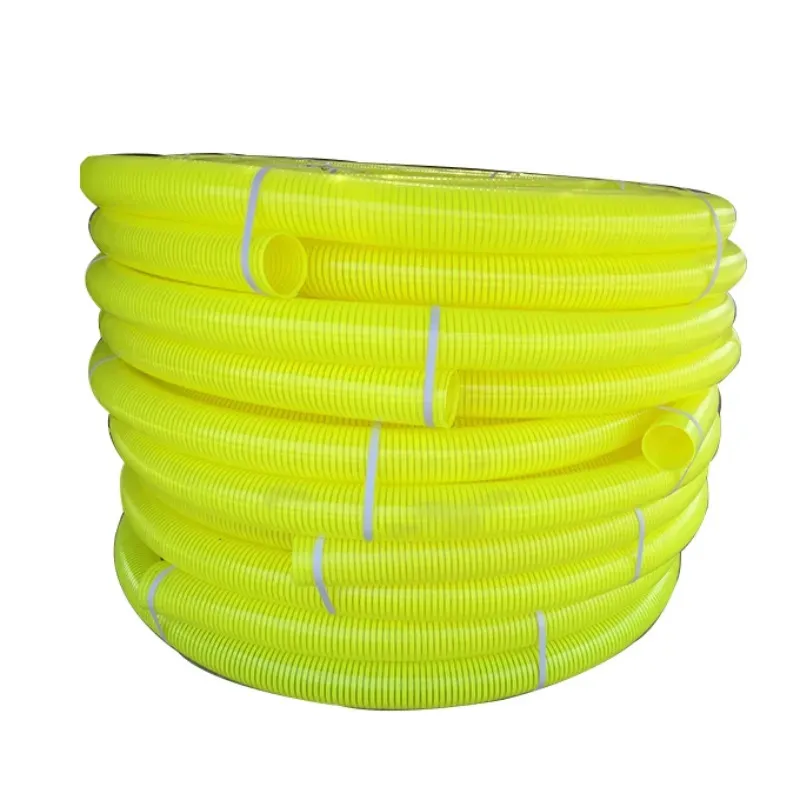Layflat Hose for Farmland Irrigation: An Efficient and Flexible Solution
Introduction
Farmland irrigation is a vital component of agricultural practices, ensuring optimal soil moisture levels for crop growth and maximizing yield. Among the various irrigation methods available, layflat hoses have gained significant popularity due to their flexibility, ease of installation, and efficient water distribution capabilities. In this article, we will explore the advantages, applications, and considerations related to layflat hoses for farmland irrigation.
Understanding Layflat Hoses
Layflat hoses are specialized irrigation tools designed to transport water from a water source to the desired irrigation area on farmland. Unlike traditional rigid pipes, layflat hoses are flexible and can be rolled or folded for easy storage and transportation. When in use, these hoses expand to their full length, providing a pathway for water distribution.
These hoses are typically made of durable materials such as PVC (Polyvinyl chloride) or synthetic fibers, ensuring resistance to sunlight, chemicals, and abrasion. They are available in various diameters and lengths to accommodate different irrigation needs and field sizes.
Advantages of Layflat Hoses
2.1 Versatility and Flexibility:
One of the primary advantages of layflat hoses is their flexibility. They can be easily maneuvered around obstacles, curves, or uneven terrain, offering versatility in irrigation layouts. Their ability to remain flat when in use ensures a consistent water flow across the field, improving water distribution efficiency.
2.2 Easy Installation and Maintenance:
Layflat hoses are simple to install and require minimal labor compared to rigid pipe systems. They can be quickly unrolled, connected to a water source, and secured with appropriate fittings or couplings. Additionally, their lightweight nature allows for ease of handling during installation and repositioning.
Maintenance is also relatively straightforward with layflat hoses. Regular visual inspections should be conducted to check for leaks, clogs, or damage. Should any issues be detected, prompt repairs or replacements are necessary to avoid water wastage and optimize irrigation efficiency.
2.3 Efficient Water Distribution:
Layflat hoses provide precise water application to the target areas, promoting even plant growth and reducing water runoff and wastage. By utilizing sprinklers, drip emitters, or other irrigation devices along the length of the hose, water can be distributed uniformly across the field. This controlled application helps reduce water usage and ensures that crops receive adequate moisture without over-irrigation.
2.4 Cost-Effective and Portable:
Compared to traditional irrigation systems, layflat hoses offer cost-effective solutions for large-scale farmland irrigation. Their affordability and flexibility make them ideal for temporary or seasonal irrigation needs. Moreover, their portability allows for easy relocation and reuse in different areas of the farm, minimizing the requirement for additional infrastructure.
Applications of Layflat Hoses
Layflat hoses find numerous applications in farmland irrigation:
3.1 Field Crops:
Layflat hoses are widely used in the irrigation of various field crops, including grains, vegetables, fruit orchards, and row crops. Their flexibility and customizable lengths allow farmers to efficiently irrigate hectares of land while mitigating water wastage.
3.2 Greenhouses and Nurseries:
In greenhouses and nurseries, layflat hoses provide an effective tool for controlled irrigation. By strategically placing irrigation devices along the hose, precise water distribution can be achieved, creating ideal growing conditions for seedlings, potted plants, and delicate crops.
3.3 Pastures and Livestock Operations:
Layflat hoses can be utilized for livestock operations and pasture irrigation. These hoses can effectively distribute water to grazing areas, keeping the pastures healthy and providing livestock with sufficient drinking water.
Factors to Consider
4.1 Water Source and Pump Capacity:
Before implementing a layflat hose irrigation system, it is crucial to assess the water source's capacity and the pump's output. The water source must have sufficient volume and pressure to supply the desired irrigation area adequately.
4.2 Field Layout and Terrain:
Consideration should be given to the field's layout and terrain when planning the installation of layflat hoses. Observe any slopes, curves, or obstacles that may impact water flow and ensure proper placement of the hoses to ensure uniform water distribution.
4.3 Crop Requirements:
Understanding the specific irrigation needs of the crops is important when selecting the appropriate layflat hose diameter and length. Factors such as evapotranspiration rates, soil moisture retention, and crop water requirements should be considered to determine the optimal irrigation system design.
4.4 Hose Material and Quality:
The choice of hose material is crucial. Opt for high-quality layflat hoses constructed from durable materials to withstand the rigors of farmland irrigation. Consider factors such as UV resistance, chemical resistance, and flexibility when selecting the most suitable hose for your needs.
4.5 Maintenance and Storage:
Regular maintenance of layflat hoses is essential for optimal performance. Inspect the hoses for any leaks, clogs, or damage and promptly address these issues. Proper storage during non-irrigation periods, such as rolling and protecting the hoses from extreme weather conditions, will prolong their lifespan.
Conclusion
Layflat hoses have emerged as a popular choice for farmland irrigation due to their flexibility, efficient water distribution, and ease of installation. With their ability to adapt to various field layouts, these hoses provide farmers with a cost-effective and efficient solution for delivering water precisely where it is needed. However, it is crucial to consider factors such as water source capacity, field layout, crop requirements, and hose quality when implementing a layflat hose irrigation system.
By utilizing layflat hoses for farmland irrigation, farmers can promote optimal crop growth, reduce water wastage, and enhance overall irrigation efficiency. This versatile irrigation tool has revolutionized agricultural practices, providing sustainable and efficient water management solutions for modern farming operations.


925.webp)




294.webp)
476.webp)
420.webp)
146.webp)
460.webp)
287.webp)
274.webp)
688.webp)


